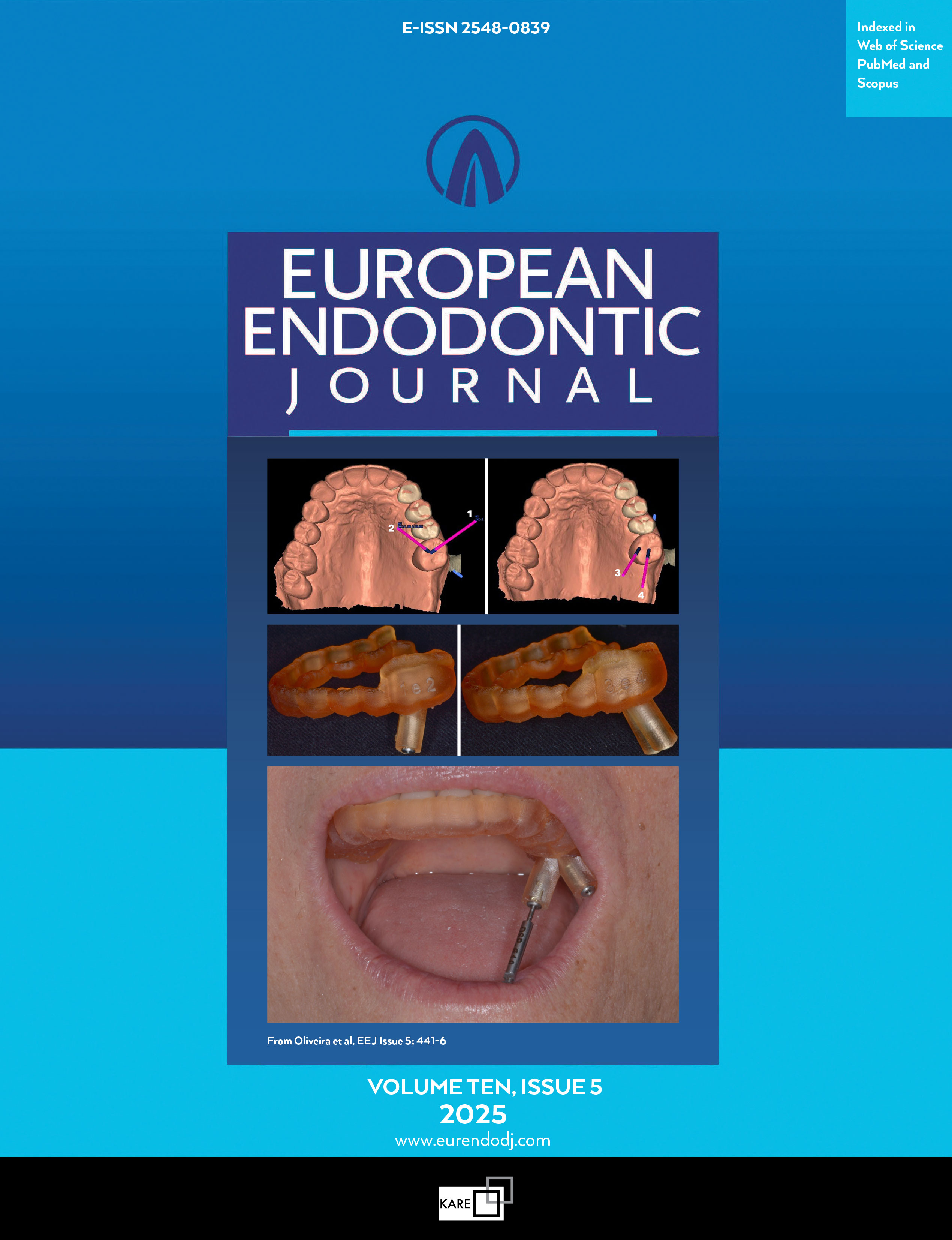Metrics
2024 IMPACT FACTOR
5 year Impact Factor
Eigenfactor Score
2024 CiteScore
Journal Citation Reports
(Clarivate 2025, JIF Rank)
Medications Used for Prevention and Treatment of Postoperative Endodontic Pain: A Systematic Review
Manuela Santini1, Ricardo Abreu Da Rosa2, Maria Beatriz Ferreira3, Fernando Barletta4, Angela Longo do Nascimento2, Theodoro Weissheimer2, Carlos Estrela5, Marcus Vinicius So21Department of Endodontics, Franciscan University, Santa Maria, RS, Brazil2Department of Conservative Dentistry, Federal University of Rio Grande do Sul, Porto Alegre, RS, Brazil
3Department of Pharmacology, Federal University of Rio Grande do Sul, Basic Health Sciences Institute, Porto Alegre, RS, Brazil
4Department of Endodontics, Lutheran University of Brazil, Canoas, RS, Brazil
5Department of Stomatology, Federal University of Gois, Faculty of Dentistry, Goinia, GO, Brazil
Objective: Prevention and management of postoperative endodontic pain is a common challenge for the endodontists. This systematic review was conducted to evaluate the efficacy and safety of medicament therapeutic protocols in the prevention and management of endodontic pain.
Methods: A literature search was undertaken in MEDLINE, Cochrane Library, LILACs, and SciELO, for articles published until December 2017, without year restriction and written only in English. An additional search was performed in the references of the retrieved studies.
Study eligibility criteria, participants, and interventions: The inclusion criteria were randomised clinical trials that evaluated the use of medications to prevent or control moderate to severe pain in adult patients, using a visual analog scale as a tool for pain measurement. The primary outcome evaluated was the reduction of pain scores. The second outcome evaluated was the need for additional analgesia and the occurrence of adverse events.
Study appraisal and synthesis methods: The quality assessment of the included studies was performed following the Jadad scale to measure the likelihood of bias in pain research reports.
Results: After removing duplicates and excluding the studies that did not meet the selection criteria, ten studies were included tin the systematic review. Among these studies, five studies administered the medications before the endodontic procedures and five studies after. These studies evaluated non-opioid analgesics (acetaminophen), opioid analgesics (tramadol and codeine), nonsteroidal anti-inflammatories (ibuprofen, flurbiprofen, ketorolac tromethamine, etodolac, tenoxicam, and naproxen), steroidal anti-inflammatory (prednisolone) or the association of medications to prevent or control postoperative pain. It was possible to establish a significant relationship between the use of additional analgesics and periapical diagnosis. Adverse events were not observed when the administration occurred before the endodontic procedure. When it was administered after the procedure, adverse reactions were reported in 2 of 3 trials included in the analysis.
Limitations: A restricted number of randomised clinical trials were found, and the difference in the methodology of the studies did not meet the definition of a systemic treatment protocol for prevention or control of postoperative pain.
Conclusion: Nonsteroidal anti-inflammatory drugs are the most common medicament to prevent and control postoperative pain, with ibuprofen being the most investigated. There is a significant association between the use of additional analgesics and periapical diagnoses. (EEJ-2020-06-155)
Manuscript Language: English
(2413 downloaded)


